102 items found
Page 1 of 2
-
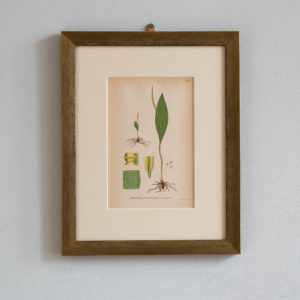
Natural History, Original Fern Prints based on the Work of Carl Lindman. ‘Ophioglossum Vulgatum’.
£220Natural History, Original Fern Prints based on the Work of Carl Lindman. ‘Ophioglossum Vulgatum’.
Carl Axel Magnus Lindman was a Swedish botanist and botanical artist, who published "Bilder ur Nordens Flora" between 1901-1905.£220 -
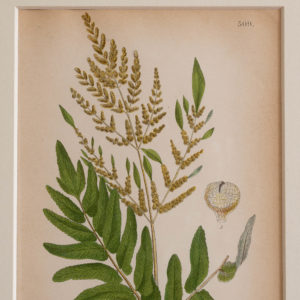
Natural History, Original Fern Prints based on the Work of Carl Lindman. ‘Osmunda Regalis.
£220Natural History, Original Fern Prints based on the Work of Carl Lindman. ‘Osmunda Regalis.
Carl Axel Magnus Lindman was a Swedish botanist and botanical artist, who published "Bilder ur Nordens Flora" between 1901-1905.£220 -
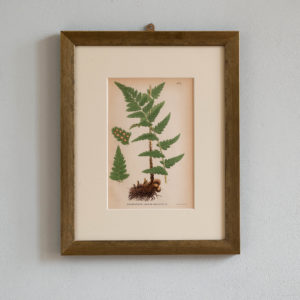
Natural History, Original Fern Prints based on the Work of Carl Lindman. ‘Aspidium Cristatum’,
£220Natural History, Original Fern Prints based on the Work of Carl Lindman. ‘Aspidium Cristatum’,
Carl Axel Magnus Lindman was a Swedish botanist and botanical artist, who published "Bilder ur Nordens Flora" between 1901-1905.£220 -
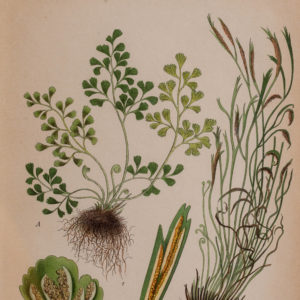
Natural History, Original Fern Prints based on the Work of Carl Lindman. ‘Asplenium Septentrionale’.
£220Natural History, Original Fern Prints based on the Work of Carl Lindman. ‘Asplenium Septentrionale’.
Carl Axel Magnus Lindman was a Swedish botanist and botanical artist, who published "Bilder ur Nordens Flora" between 1901-1905.£220 -
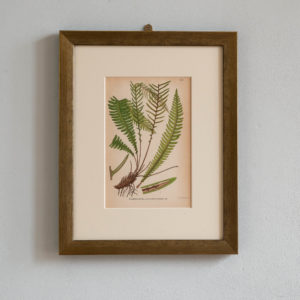
Natural History, Original Fern Prints based on the Work of Carl Lindman. ‘Blechnum Spicant’,
£220Natural History, Original Fern Prints based on the Work of Carl Lindman. ‘Blechnum Spicant’,
Carl Axel Magnus Lindman was a Swedish botanist and botanical artist, who published "Bilder ur Nordens Flora" between 1901-1905.£220 -
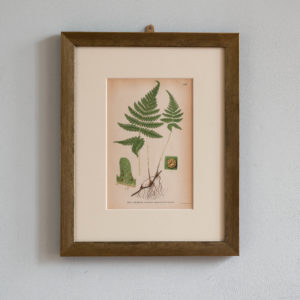
Natural History, Original Fern Prints based on the Work of Carl Lindman. ‘Aspidium Phegopteris’,
£220Natural History, Original Fern Prints based on the Work of Carl Lindman. ‘Aspidium Phegopteris’,
Carl Axel Magnus Lindman was a Swedish botanist and botanical artist, who published "Bilder ur Nordens Flora" between 1901-1905.£220 -
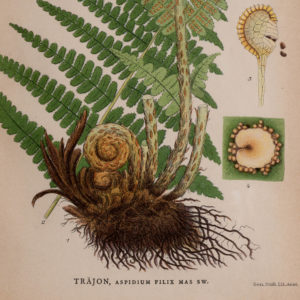
Natural History, Original Fern Prints based on the Work of Carl Lindman. ‘Aspidium Filix’,
£220Natural History, Original Fern Prints based on the Work of Carl Lindman. ‘Aspidium Filix’,
Carl Axel Magnus Lindman was a Swedish botanist and botanical artist, who published "Bilder ur Nordens Flora" between 1901-1905.£220 -
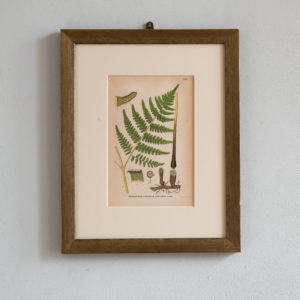
Natural History, Original Fern Prints based on the Work of Carl Lindman. ‘Pteridium Aquilinum’,
£220Natural History, Original Fern Prints based on the Work of Carl Lindman. ‘Pteridium Aquilinum’,
Carl Axel Magnus Lindman was a Swedish botanist and botanical artist, who published "Bilder ur Nordens Flora" between 1901-1905.£220 -
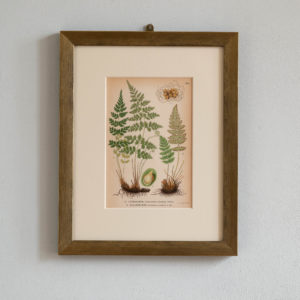
Natural History, Original Fern Prints based on the Work of Carl Lindman. ‘Woodsia Ilvensis’,
£220Natural History, Original Fern Prints based on the Work of Carl Lindman. ‘Woodsia Ilvensis’,
Carl Axel Magnus Lindman was a Swedish botanist and botanical artist, who published "Bilder ur Nordens Flora" between 1901-1905.£220 -
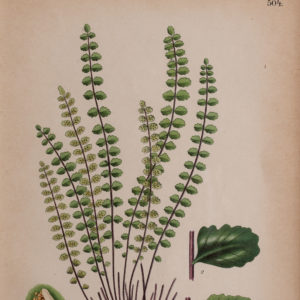
Natural History, Original Fern Prints based on the Work of Carl Lindman. ‘Asplenium Trichomanes’
£220Natural History, Original Fern Prints based on the Work of Carl Lindman. ‘Asplenium Trichomanes’
Carl Axel Magnus Lindman was a Swedish botanist and botanical artist, who published "Bilder ur Nordens Flora" between 1901-1905.£220 -
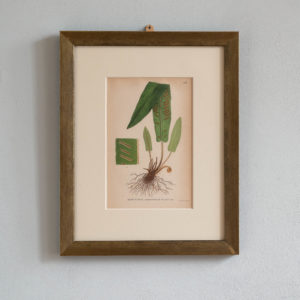
Natural History, Original Fern Prints based on the Work of Carl Lindman. ‘Scolopendrium Vulgare’,
£220Natural History, Original Fern Prints based on the Work of Carl Lindman. ‘Scolopendrium Vulgare’,
Carl Axel Magnus Lindman was a Swedish botanist and botanical artist, who published "Bilder ur Nordens Flora" between 1901-1905.£220 -
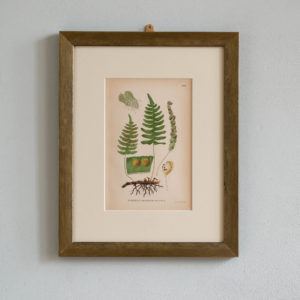
Natural History, Original Fern Prints based on the Work of Carl Lindman. ‘Polypdodium Vulgare’,
£220Natural History, Original Fern Prints based on the Work of Carl Lindman. ‘Polypdodium Vulgare’,
Carl Axel Magnus Lindman was a Swedish botanist and botanical artist, who published "Bilder ur Nordens Flora" between 1901-1905.£220 -
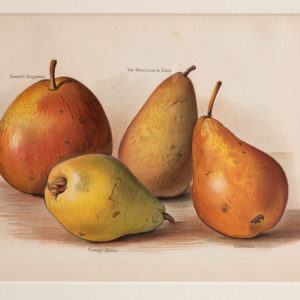
Fruit Growers Guide – Portugal Quince, Durondeau, Van Mons Leon le Clerc, Gansel’s Bergamot,
£220 EachFruit Growers Guide – Portugal Quince, Durondeau, Van Mons Leon le Clerc, Gansel’s Bergamot,
Published by John Wright in 1894.£220 Each -
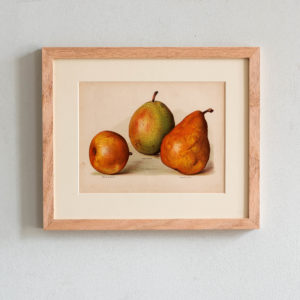
Fruit Growers Guide – Nouvelle Fulvie, Easter Beurré, Olivier de Serres,
£220 EachFruit Growers Guide – Nouvelle Fulvie, Easter Beurré, Olivier de Serres,
Published by John Wright in 1894.£220 Each -
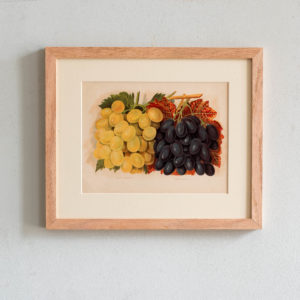
Fruit Growers Guide – Muscat of Alexandria, Madresfield Court,
£220 EachFruit Growers Guide – Muscat of Alexandria, Madresfield Court,
Published by John Wright in 1894.£220 Each -
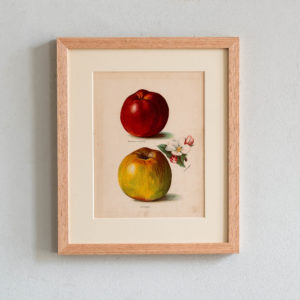
Fruit Growers Guide – Gascoigne’s Seedling, Sandringham,
£220 EachFruit Growers Guide – Gascoigne’s Seedling, Sandringham,
Published by John Wright in 1894.£220 Each -
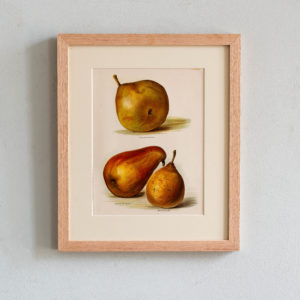
Fruit Growers Guide – Doyenné du Comice, Beurré Superfin, Souvenir du Congrès,
£220 EachFruit Growers Guide – Doyenné du Comice, Beurré Superfin, Souvenir du Congrès,
Published by John Wright in 1894.£220 Each -
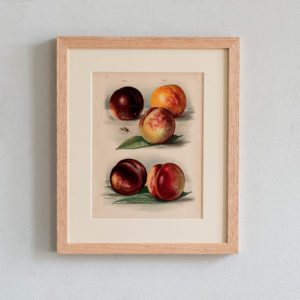
Fruit Growers Guide – Milton, Goldoni, Victoria, Newton, Stanwick Elruge,
£220 EachFruit Growers Guide – Milton, Goldoni, Victoria, Newton, Stanwick Elruge,
Published by John Wright in 1894.£220 Each -
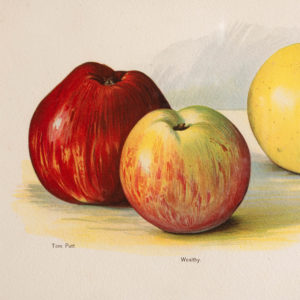
Fruit Growers Guide – Tom Putt, Wealthy, Queen Caroline,
£220 EachFruit Growers Guide – Tom Putt, Wealthy, Queen Caroline,
Published by John Wright in 1894.£220 Each -
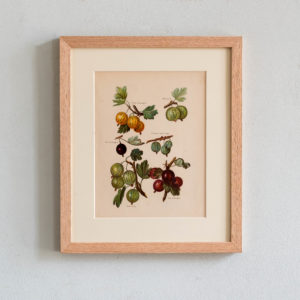
Fruit Growers Guide – Green Gage, Red Warrington, Red Champagne, Yellow Champagne, White Smith, Pitmaston Green Gage,
£220 EachFruit Growers Guide – Green Gage, Red Warrington, Red Champagne, Yellow Champagne, White Smith, Pitmaston Green Gage,
Published by John Wright in 1894.£220 Each -
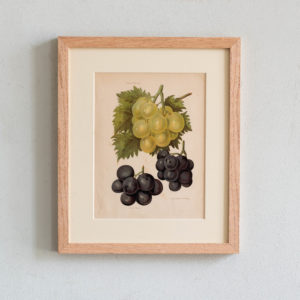
Fruit Growers Guide – Duke of Buccleuch, Gros Colman, Lady Downe’s Seedling,
£220 EachFruit Growers Guide – Duke of Buccleuch, Gros Colman, Lady Downe’s Seedling,
Published by John Wright in 1894.£220 Each -
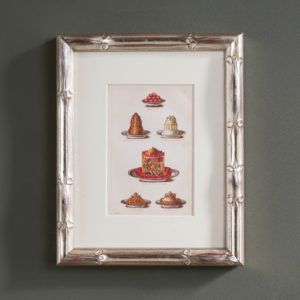
Mrs Beeton, original chromolithographs
£195 eachMrs Beeton, original chromolithographs
Isabella Mary Beeton was an English journalist, editor and writer. In 1859 with her husband, Mrs Beeton launched a series of 48-page monthly supplements to The Englishwoman's Domestic Magazine; the 24 instalments were published in one volume as Mrs Beeton's Book of Household Management.£195 each -
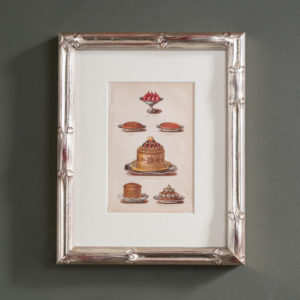
Mrs Beeton, original chromolithographs
£195 eachMrs Beeton, original chromolithographs
Isabella Mary Beeton was an English journalist, editor and writer. In 1859 with her husband, Mrs Beeton launched a series of 48-page monthly supplements to The Englishwoman's Domestic Magazine; the 24 instalments were published in one volume as Mrs Beeton's Book of Household Management.£195 each -
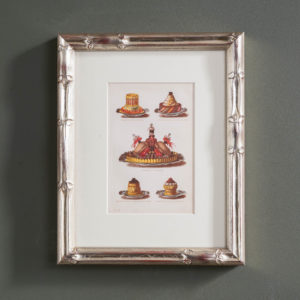
Mrs Beeton, original chromolithographs
£195 eachMrs Beeton, original chromolithographs
Isabella Mary Beeton was an English journalist, editor and writer. In 1859 with her husband, Mrs Beeton launched a series of 48-page monthly supplements to The Englishwoman's Domestic Magazine; the 24 instalments were published in one volume as Mrs Beeton's Book of Household Management.£195 each -
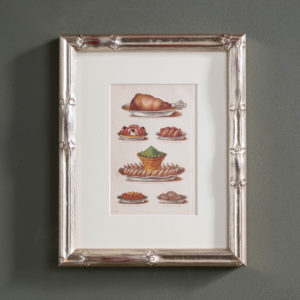
Mrs Beeton, original chromolithographs
£195 eachMrs Beeton, original chromolithographs
Isabella Mary Beeton was an English journalist, editor and writer. In 1859 the with her husband Mrs Beeton launched a series of 48-page monthly supplements to The Englishwoman's Domestic Magazine; the 24 instalments were published in one volume as Mrs Beeton's Book of Household Management.£195 each -
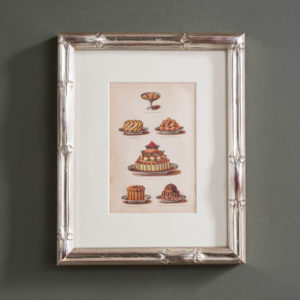
Mrs Beeton, original chromolithographs
£195 eachMrs Beeton, original chromolithographs
Isabella Mary Beeton was an English journalist, editor and writer. In 1859 with her husband, Mrs Beeton launched a series of 48-page monthly supplements to The Englishwoman's Domestic Magazine; the 24 instalments were published in one volume as Mrs Beeton's Book of Household Management.£195 each -
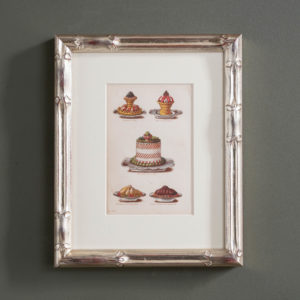
Mrs Beeton, original chromolithographs
£195 eachMrs Beeton, original chromolithographs
Isabella Mary Beeton was an English journalist, editor and writer. In 1859 with her husband, Mrs Beeton launched a series of 48-page monthly supplements to The Englishwoman's Domestic Magazine; the 24 instalments were published in one volume as Mrs Beeton's Book of Household Management.£195 each -
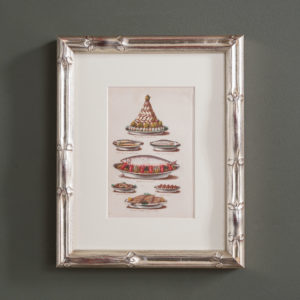
Mrs Beeton, original chromolithographs
£195 eachMrs Beeton, original chromolithographs
Isabella Mary Beeton was an English journalist, editor and writer. In 1859 with her husband, Mrs Beeton launched a series of 48-page monthly supplements to The Englishwoman's Domestic Magazine; the 24 instalments were published in one volume as Mrs Beeton's Book of Household Management.£195 each -

Mrs Beeton, original chromolithographs
£195 eachMrs Beeton, original chromolithographs
Isabella Mary Beeton was an English journalist, editor and writer. In 1859 with her husband, Mrs Beeton launched a series of 48-page monthly supplements to The Englishwoman's Domestic Magazine; the 24 instalments were published in one volume as Mrs Beeton's Book of Household Management.£195 each -
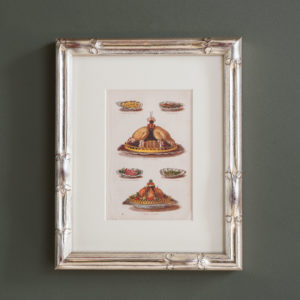
Mrs Beeton, original chromolithographs
£195 eachMrs Beeton, original chromolithographs
Isabella Mary Beeton was an English journalist, editor and writer. In 1859 with her husband, Mrs Beeton launched a series of 48-page monthly supplements to The Englishwoman's Domestic Magazine; the 24 instalments were published in one volume as Mrs Beeton's Book of Household Management.£195 each -
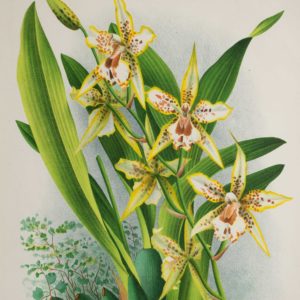
Linden Botanicals, Odontoglossum Duvivieranum,
£175 eachLinden Botanicals, Odontoglossum Duvivieranum,
L’Illustration Horticole, was a monthly horticultural review, founded in 1854 in Ghent, Belgium, by Ambroise Verschaffelt, a nurseryman who specialised in new plant introductions from South America. The lavish illustrations were produced by some of the very best botanical artists and lithographers – A. Goosens, P. De Pannemaeker and J. Goffart. The L’Illustration Horticole although founded by Jean Jules Linden (1817 – 1898) became a collaborative effort of many great horticulturists and field botanists of the day. Jean Linden in his own right was a renowned orchid grower and collector. Each monthly edition featured chromolithograph of botanical prints. Plants such as orchids, camellias, roses and leafy plants such as ferns and palm trees were represented. The magazine’s scope included pictures, descriptions, the history and culture of “the most remarkable plants,” new introductions, horticultural history, botanical expeditions, and accounts of the major expositions and of new works on botany and horticulture as well as garden descriptions and layouts.£175 each -
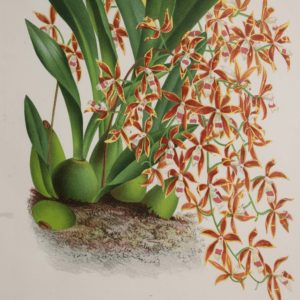
Linden Botanicals, Odontoglossum Constricutum,
£175 eachLinden Botanicals, Odontoglossum Constricutum,
L’Illustration Horticole, was a monthly horticultural review, founded in 1854 in Ghent, Belgium, by Ambroise Verschaffelt, a nurseryman who specialised in new plant introductions from South America. The lavish illustrations were produced by some of the very best botanical artists and lithographers – A. Goosens, P. De Pannemaeker and J. Goffart. The L’Illustration Horticole although founded by Jean Jules Linden (1817 – 1898) became a collaborative effort of many great horticulturists and field botanists of the day. Jean Linden in his own right was a renowned orchid grower and collector. Each monthly edition featured chromolithograph of botanical prints. Plants such as orchids, camellias, roses and leafy plants such as ferns and palm trees were represented. The magazine’s scope included pictures, descriptions, the history and culture of “the most remarkable plants,” new introductions, horticultural history, botanical expeditions, and accounts of the major expositions and of new works on botany and horticulture as well as garden descriptions and layouts.£175 each -
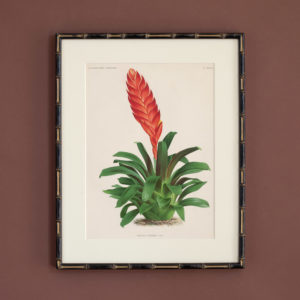
Linden Botanicals, Vriesea Fulgida,
£175 eachLinden Botanicals, Vriesea Fulgida,
L’Illustration Horticole, was a monthly horticultural review, founded in 1854 in Ghent, Belgium, by Ambroise Verschaffelt, a nurseryman who specialised in new plant introductions from South America. The lavish illustrations were produced by some of the very best botanical artists and lithographers – A. Goosens, P. De Pannemaeker and J. Goffart. The L’Illustration Horticole although founded by Jean Jules Linden (1817 – 1898) became a collaborative effort of many great horticulturists and field botanists of the day. Jean Linden in his own right was a renowned orchid grower and collector. Each monthly edition featured chromolithograph of botanical prints. Plants such as orchids, camellias, roses and leafy plants such as ferns and palm trees were represented. The magazine’s scope included pictures, descriptions, the history and culture of “the most remarkable plants,” new introductions, horticultural history, botanical expeditions, and accounts of the major expositions and of new works on botany and horticulture as well as garden descriptions and layouts.£175 each -
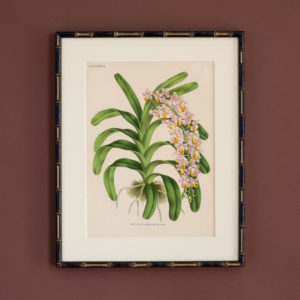
Linden Botanicals, Aerides Reichenbachi,
£175 eachLinden Botanicals, Aerides Reichenbachi,
L’Illustration Horticole, was a monthly horticultural review, founded in 1854 in Ghent, Belgium, by Ambroise Verschaffelt, a nurseryman who specialised in new plant introductions from South America. The lavish illustrations were produced by some of the very best botanical artists and lithographers – A. Goosens, P. De Pannemaeker and J. Goffart. The L’Illustration Horticole although founded by Jean Jules Linden (1817 – 1898) became a collaborative effort of many great horticulturists and field botanists of the day. Jean Linden in his own right was a renowned orchid grower and collector. Each monthly edition featured chromolithograph of botanical prints. Plants such as orchids, camellias, roses and leafy plants such as ferns and palm trees were represented. The magazine’s scope included pictures, descriptions, the history and culture of “the most remarkable plants,” new introductions, horticultural history, botanical expeditions, and accounts of the major expositions and of new works on botany and horticulture as well as garden descriptions and layouts.£175 each -
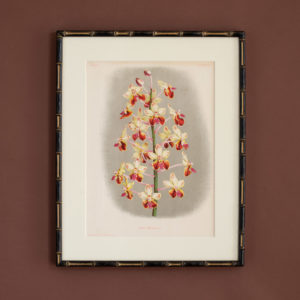
Linden Botanicals, Vanda Superba,
£175 eachLinden Botanicals, Vanda Superba,
L’Illustration Horticole, was a monthly horticultural review, founded in 1854 in Ghent, Belgium, by Ambroise Verschaffelt, a nurseryman who specialised in new plant introductions from South America. The lavish illustrations were produced by some of the very best botanical artists and lithographers – A. Goosens, P. De Pannemaeker and J. Goffart. The L’Illustration Horticole although founded by Jean Jules Linden (1817 – 1898) became a collaborative effort of many great horticulturists and field botanists of the day. Jean Linden in his own right was a renowned orchid grower and collector. Each monthly edition featured chromolithograph of botanical prints. Plants such as orchids, camellias, roses and leafy plants such as ferns and palm trees were represented. The magazine’s scope included pictures, descriptions, the history and culture of “the most remarkable plants,” new introductions, horticultural history, botanical expeditions, and accounts of the major expositions and of new works on botany and horticulture as well as garden descriptions and layouts.£175 each -
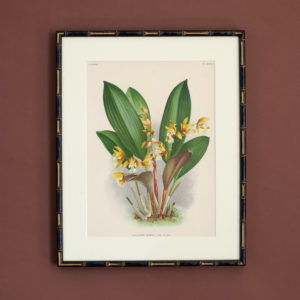
Linden Botanicals, Coelogyne Lurida,
£175 eachLinden Botanicals, Coelogyne Lurida,
L’Illustration Horticole, was a monthly horticultural review, founded in 1854 in Ghent, Belgium, by Ambroise Verschaffelt, a nurseryman who specialised in new plant introductions from South America. The lavish illustrations were produced by some of the very best botanical artists and lithographers – A. Goosens, P. De Pannemaeker and J. Goffart. The L’Illustration Horticole although founded by Jean Jules Linden (1817 – 1898) became a collaborative effort of many great horticulturists and field botanists of the day. Jean Linden in his own right was a renowned orchid grower and collector. Each monthly edition featured chromolithograph of botanical prints. Plants such as orchids, camellias, roses and leafy plants such as ferns and palm trees were represented. The magazine’s scope included pictures, descriptions, the history and culture of “the most remarkable plants,” new introductions, horticultural history, botanical expeditions, and accounts of the major expositions and of new works on botany and horticulture as well as garden descriptions and layouts.£175 each -
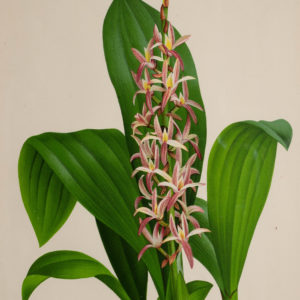
Linden Botanicals, Eria Striolata,
£175 eachLinden Botanicals, Eria Striolata,
L’Illustration Horticole, was a monthly horticultural review, founded in 1854 in Ghent, Belgium, by Ambroise Verschaffelt, a nurseryman who specialised in new plant introductions from South America. The lavish illustrations were produced by some of the very best botanical artists and lithographers – A. Goosens, P. De Pannemaeker and J. Goffart. The L’Illustration Horticole although founded by Jean Jules Linden (1817 – 1898) became a collaborative effort of many great horticulturists and field botanists of the day. Jean Linden in his own right was a renowned orchid grower and collector. Each monthly edition featured chromolithograph of botanical prints. Plants such as orchids, camellias, roses and leafy plants such as ferns and palm trees were represented. The magazine’s scope included pictures, descriptions, the history and culture of “the most remarkable plants,” new introductions, horticultural history, botanical expeditions, and accounts of the major expositions and of new works on botany and horticulture as well as garden descriptions and layouts.£175 each -
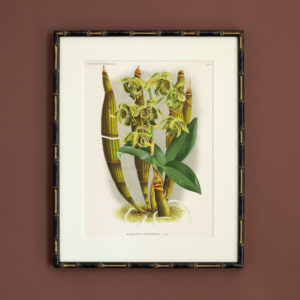
Linden Botanicals, Dendiobium Macrophyllum,
£175 eachLinden Botanicals, Dendiobium Macrophyllum,
L’Illustration Horticole, was a monthly horticultural review, founded in 1854 in Ghent, Belgium, by Ambroise Verschaffelt, a nurseryman who specialised in new plant introductions from South America. The lavish illustrations were produced by some of the very best botanical artists and lithographers – A. Goosens, P. De Pannemaeker and J. Goffart. The L’Illustration Horticole although founded by Jean Jules Linden (1817 – 1898) became a collaborative effort of many great horticulturists and field botanists of the day. Jean Linden in his own right was a renowned orchid grower and collector. Each monthly edition featured chromolithograph of botanical prints. Plants such as orchids, camellias, roses and leafy plants such as ferns and palm trees were represented. The magazine’s scope included pictures, descriptions, the history and culture of “the most remarkable plants,” new introductions, horticultural history, botanical expeditions, and accounts of the major expositions and of new works on botany and horticulture as well as garden descriptions and layouts.£175 each -
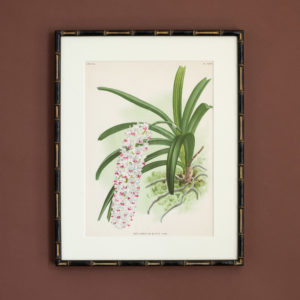
Linden Botanicals, Rhynchostylis Retusa,
£175 eachLinden Botanicals, Rhynchostylis Retusa,
L’Illustration Horticole, was a monthly horticultural review, founded in 1854 in Ghent, Belgium, by Ambroise Verschaffelt, a nurseryman who specialised in new plant introductions from South America. The lavish illustrations were produced by some of the very best botanical artists and lithographers – A. Goosens, P. De Pannemaeker and J. Goffart. The L’Illustration Horticole although founded by Jean Jules Linden (1817 – 1898) became a collaborative effort of many great horticulturists and field botanists of the day. Jean Linden in his own right was a renowned orchid grower and collector. Each monthly edition featured chromolithograph of botanical prints. Plants such as orchids, camellias, roses and leafy plants such as ferns and palm trees were represented. The magazine’s scope included pictures, descriptions, the history and culture of “the most remarkable plants,” new introductions, horticultural history, botanical expeditions, and accounts of the major expositions and of new works on botany and horticulture as well as garden descriptions and layouts.£175 each -
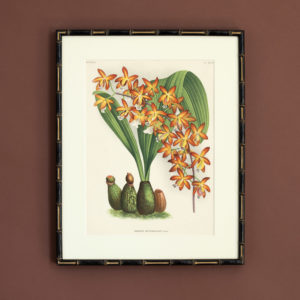
Linden Botanicals, Eriopsis Rutidobulbon,
£175 eachLinden Botanicals, Eriopsis Rutidobulbon,
L’Illustration Horticole, was a monthly horticultural review, founded in 1854 in Ghent, Belgium, by Ambroise Verschaffelt, a nurseryman who specialised in new plant introductions from South America. The lavish illustrations were produced by some of the very best botanical artists and lithographers – A. Goosens, P. De Pannemaeker and J. Goffart. The L’Illustration Horticole although founded by Jean Jules Linden (1817 – 1898) became a collaborative effort of many great horticulturists and field botanists of the day. Jean Linden in his own right was a renowned orchid grower and collector. Each monthly edition featured chromolithograph of botanical prints. Plants such as orchids, camellias, roses and leafy plants such as ferns and palm trees were represented. The magazine’s scope included pictures, descriptions, the history and culture of “the most remarkable plants,” new introductions, horticultural history, botanical expeditions, and accounts of the major expositions and of new works on botany and horticulture as well as garden descriptions and layouts.£175 each -
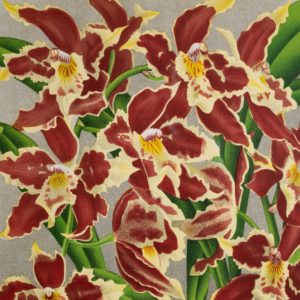
Linden Botanicals, Odontoglossum Crispum,
£175 eachLinden Botanicals, Odontoglossum Crispum,
L’Illustration Horticole, was a monthly horticultural review, founded in 1854 in Ghent, Belgium, by Ambroise Verschaffelt, a nurseryman who specialised in new plant introductions from South America. The lavish illustrations were produced by some of the very best botanical artists and lithographers – A. Goosens, P. De Pannemaeker and J. Goffart. The L’Illustration Horticole although founded by Jean Jules Linden (1817 – 1898) became a collaborative effort of many great horticulturists and field botanists of the day. Jean Linden in his own right was a renowned orchid grower and collector. Each monthly edition featured chromolithograph of botanical prints. Plants such as orchids, camellias, roses and leafy plants such as ferns and palm trees were represented. The magazine’s scope included pictures, descriptions, the history and culture of “the most remarkable plants,” new introductions, horticultural history, botanical expeditions, and accounts of the major expositions and of new works on botany and horticulture as well as garden descriptions and layouts.£175 each -
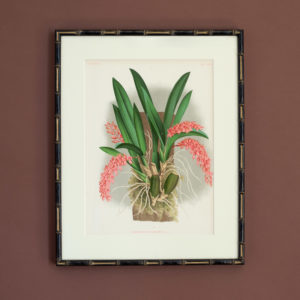
Linden Botanicals, Rodriguezia Bungerothi,
£175 eachLinden Botanicals, Rodriguezia Bungerothi,
L’Illustration Horticole, was a monthly horticultural review, founded in 1854 in Ghent, Belgium, by Ambroise Verschaffelt, a nurseryman who specialised in new plant introductions from South America. The lavish illustrations were produced by some of the very best botanical artists and lithographers – A. Goosens, P. De Pannemaeker and J. Goffart. The L’Illustration Horticole although founded by Jean Jules Linden (1817 – 1898) became a collaborative effort of many great horticulturists and field botanists of the day. Jean Linden in his own right was a renowned orchid grower and collector. Each monthly edition featured chromolithograph of botanical prints. Plants such as orchids, camellias, roses and leafy plants such as ferns and palm trees were represented. The magazine’s scope included pictures, descriptions, the history and culture of “the most remarkable plants,” new introductions, horticultural history, botanical expeditions, and accounts of the major expositions and of new works on botany and horticulture as well as garden descriptions and layouts.£175 each -
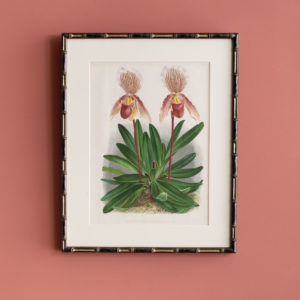
Linden Botanicals,
£175 eachLinden Botanicals,
L’Illustration Horticole, was a monthly horticultural review, founded in 1854 in Ghent, Belgium, by Ambroise Verschaffelt, a nurseryman who specialised in new plant introductions from South America. The lavish illustrations were produced by some of the very best botanical artists and lithographers – A. Goosens, P. De Pannemaeker and J. Goffart. The L’Illustration Horticole although founded by Jean Jules Linden (1817 – 1898) became a collaborative effort of many great horticulturists and field botanists of the day. Jean Linden in his own right was a renowned orchid grower and collector. Each monthly edition featured chromolithograph of botanical prints. Plants such as orchids, camellias, roses and leafy plants such as ferns and palm trees were represented. The magazine’s scope included pictures, descriptions, the history and culture of “the most remarkable plants,” new introductions, horticultural history, botanical expeditions, and accounts of the major expositions and of new works on botany and horticulture as well as garden descriptions and layouts.£175 each -
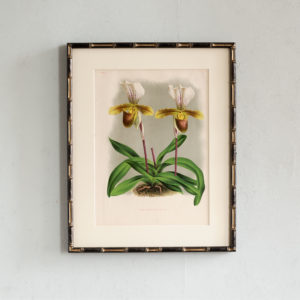
Linden Botanicals
£175 eachLinden Botanicals
L’Illustration Horticole, was a monthly horticultural review, founded in 1854 in Ghent, Belgium, by Ambroise Verschaffelt, a nurseryman who specialised in new plant introductions from South America. The lavish illustrations were produced by some of the very best botanical artists and lithographers – A. Goosens, P. De Pannemaeker and J. Goffart. The L’Illustration Horticole although founded by Jean Jules Linden (1817 – 1898) became a collaborative effort of many great horticulturists and field botanists of the day. Jean Linden in his own right was a renowned orchid grower and collector. Each monthly edition featured chromolithograph of botanical prints. Plants such as orchids, camellias, roses and leafy plants such as ferns and palm trees were represented. The magazine’s scope included pictures, descriptions, the history and culture of “the most remarkable plants,” new introductions, horticultural history, botanical expeditions, and accounts of the major expositions and of new works on botany and horticulture as well as garden descriptions and layouts.£175 each -
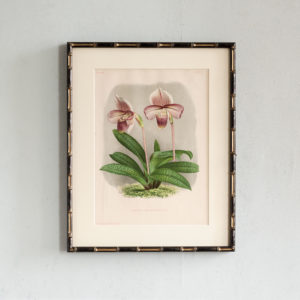
Linden Botanicals
£175 eachLinden Botanicals
L’Illustration Horticole, was a monthly horticultural review, founded in 1854 in Ghent, Belgium, by Ambroise Verschaffelt, a nurseryman who specialised in new plant introductions from South America. The lavish illustrations were produced by some of the very best botanical artists and lithographers – A. Goosens, P. De Pannemaeker and J. Goffart. The L’Illustration Horticole although founded by Jean Jules Linden (1817 – 1898) became a collaborative effort of many great horticulturists and field botanists of the day. Jean Linden in his own right was a renowned orchid grower and collector. Each monthly edition featured chromolithograph of botanical prints. Plants such as orchids, camellias, roses and leafy plants such as ferns and palm trees were represented. The magazine’s scope included pictures, descriptions, the history and culture of “the most remarkable plants,” new introductions, horticultural history, botanical expeditions, and accounts of the major expositions and of new works on botany and horticulture as well as garden descriptions and layouts.£175 each -
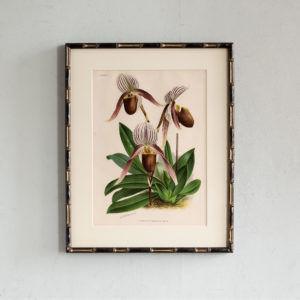
Linden Botanicals
£175 eachLinden Botanicals
L’Illustration Horticole, was a monthly horticultural review, founded in 1854 in Ghent, Belgium, by Ambroise Verschaffelt, a nurseryman who specialised in new plant introductions from South America. The lavish illustrations were produced by some of the very best botanical artists and lithographers – A. Goosens, P. De Pannemaeker and J. Goffart. The L’Illustration Horticole although founded by Jean Jules Linden (1817 – 1898) became a collaborative effort of many great horticulturists and field botanists of the day. Jean Linden in his own right was a renowned orchid grower and collector. Each monthly edition featured chromolithograph of botanical prints. Plants such as orchids, camellias, roses and leafy plants such as ferns and palm trees were represented. The magazine’s scope included pictures, descriptions, the history and culture of “the most remarkable plants,” new introductions, horticultural history, botanical expeditions, and accounts of the major expositions and of new works on botany and horticulture as well as garden descriptions and layouts.£175 each -
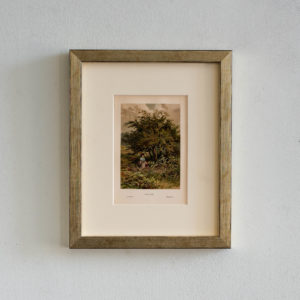
Nineteenth century arboreal prints,
£140 eachNineteenth century arboreal prints,
European trees published in London c1880. Mounted in cream framed in pale gold. 'Hawthorn'£140 each -
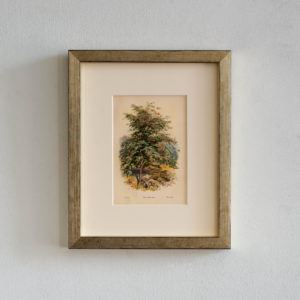
Nineteenth century arboreal prints,
£140 eachNineteenth century arboreal prints,
European trees published c1880. Mounted in cream framed in pale gold. 'Mountain Ash'£140 each -
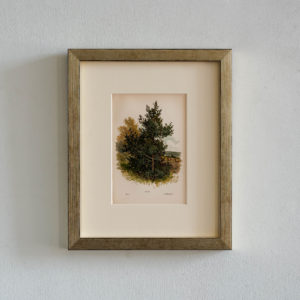
Nineteenth century arboreal prints,
£140 eachNineteenth century arboreal prints,
European trees published c1880. Mounted in cream framed in pale gold. 'Holly'.£140 each -
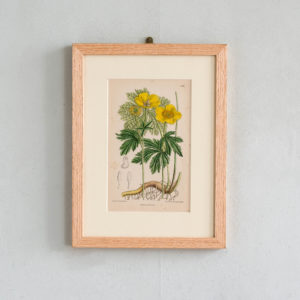
Curtis’s Botanical Lithographs,
£140 eachCurtis’s Botanical Lithographs,
Printed by L. Reeve and Co. of Covent Garden. Framed in natural oak.£140 each -
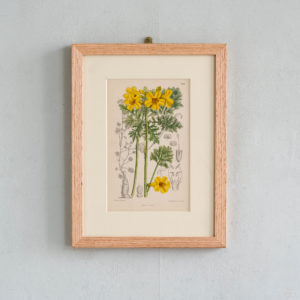
Curtis’s Botanical Lithographs,
£140 eachCurtis’s Botanical Lithographs,
Printed by L. Reeve and Co. of Covent Garden. Framed in natural oak.£140 each -
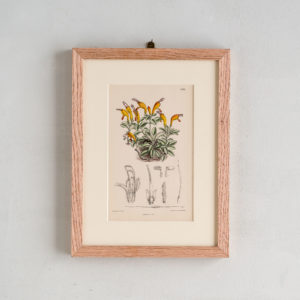
Curtis’s Botanical Lithographs,
£140 eachCurtis’s Botanical Lithographs,
Printed by L. Reeve and Co. of Covent Garden. Framed in natural oak.£140 each -
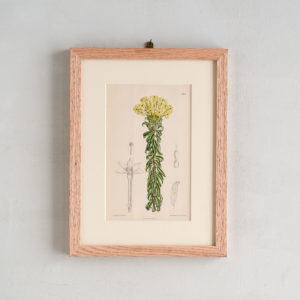
Curtis’s Botanical Lithographs,
£140 eachCurtis’s Botanical Lithographs,
Printed by L. Reeve and Co. of Covent Garden. Framed in natural oak.£140 each -
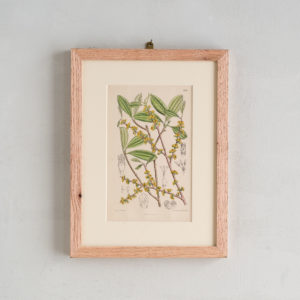
Curtis’s Botanical Lithographs,
£140 eachCurtis’s Botanical Lithographs,
Printed by L. Reeve and Co. of Covent Garden. Framed in natural oak.£140 each -
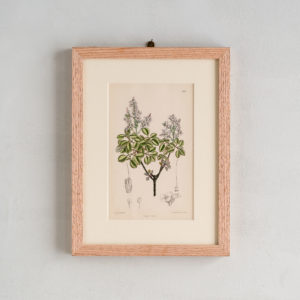
Curtis’s Botanical Lithographs,
£140 eachCurtis’s Botanical Lithographs,
Printed by L. Reeve and Co. of Covent Garden. Framed in natural oak.£140 each -
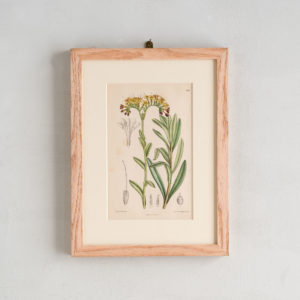
Curtis’s Botanical Lithographs,
£140 eachCurtis’s Botanical Lithographs,
Printed by L. Reeve and Co. of Covent Garden. Framed in natural oak.£140 each -
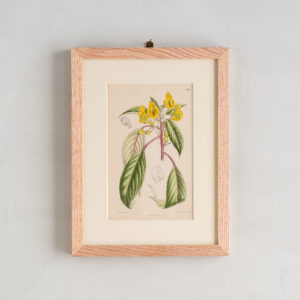
Curtis’s Botanical Lithographs,
£140 eachCurtis’s Botanical Lithographs,
Printed by L. Reeve and Co. of Covent Garden. Framed in natural oak.£140 each -
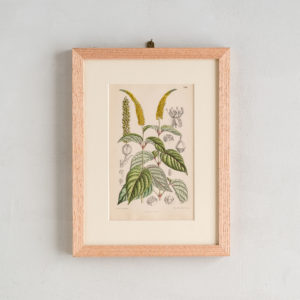
Curtis’s Botanical Lithographs,
£140 eachCurtis’s Botanical Lithographs,
Printed by L. Reeve and Co. of Covent Garden. Framed in natural oak.£140 each -

Curtis’s Botanical Lithographs,
£140 eachCurtis’s Botanical Lithographs,
Printed by L. Reeve and Co. of Covent Garden. Framed in natural oak.£140 each -
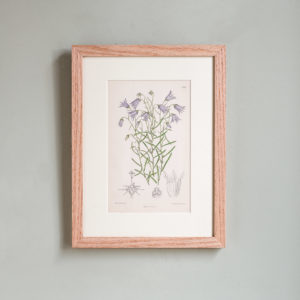
Curtis’s Botanical Lithographs,
£140 eachCurtis’s Botanical Lithographs,
Printed by L. Reeve and Co. of Covent Garden. Framed in natural oak.£140 each -
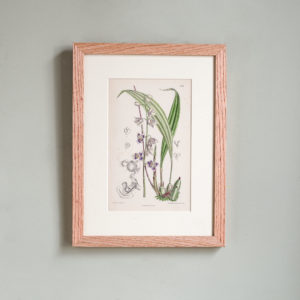
Curtis’s Botanical Lithographs,
£140 eachCurtis’s Botanical Lithographs,
Printed by L. Reeve and Co. of Covent Garden. Framed in natural oak.£140 each -
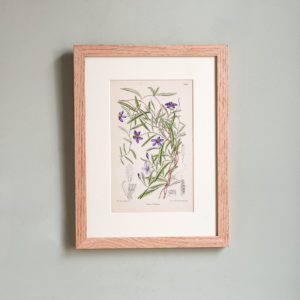
Curtis’s Botanical Lithographs,
£140 eachCurtis’s Botanical Lithographs,
Printed by L. Reeve and Co. of Covent Garden. Framed in natural oak.£140 each -
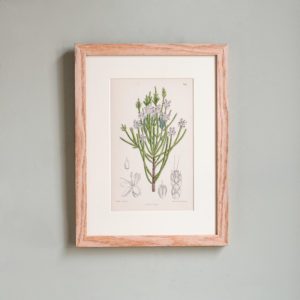
Curtis’s Botanical Lithographs,
£140 eachCurtis’s Botanical Lithographs,
Printed by L. Reeve and Co. of Covent Garden. Framed in natural oak.£140 each -
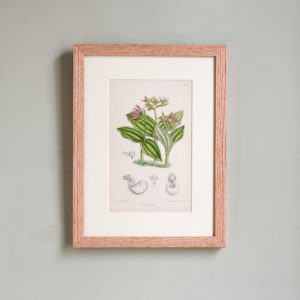
Curtis’s Botanical Lithographs,
£140 eachCurtis’s Botanical Lithographs,
Printed by L. Reeve and Co. of Covent Garden. Framed in natural oak.£140 each -
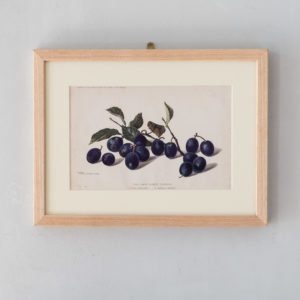
The Profitable Farm and Garden 1902,
£140The Profitable Farm and Garden 1902,
Published in 1902 by W.H & L. Collingbridge, of London. Framed in natural ash. Two Good Market Damsons - The Shropshire, and Frogmore Prolific.£140 -
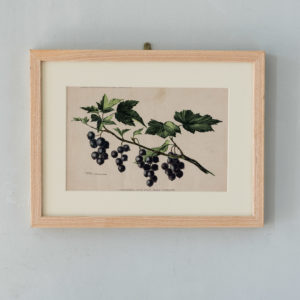
The Profitable Farm and Garden 1902,
£140The Profitable Farm and Garden 1902,
Published in 1902 by W.H & L. Collingbridge, of London. Framed in natural ash. Black Currants.£140 -
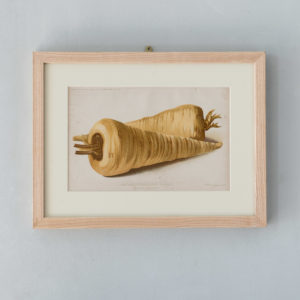
The Profitable Farm and Garden 1902,
£140The Profitable Farm and Garden 1902,
Published in 1902 by W.H & L. Collingbridge, of London. Framed in natural ash. The Hollow Crown Parsnip.£140 -
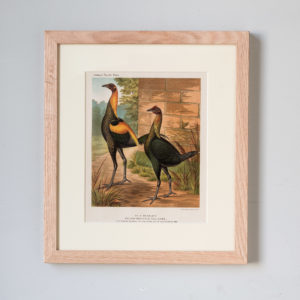
Wright’s Poultry, original chromolithograph from 1873
£130 eachWright’s Poultry, original chromolithograph from 1873
Published by Cassells c1873. Framed in natural ash. 'Brown-Breasted Red Game'£130 each -
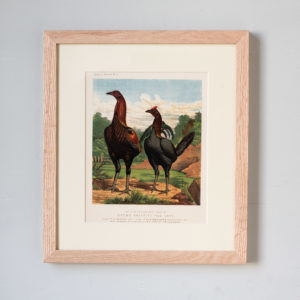
Wright’s Poultry, original chromolithograph from 1873
£130 eachWright’s Poultry, original chromolithograph from 1873
Published by Cassells c1873. Framed in natural ash. 'Brown-Breasted Red Game'£130 each -
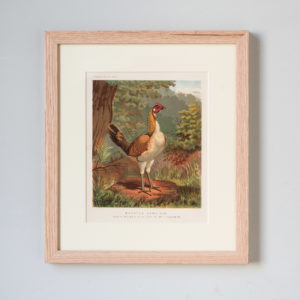
Wright’s Poultry, original chromolithograph from 1873
£130 eachWright’s Poultry, original chromolithograph from 1873
Published by Cassells c1873. Framed in natural ash. 'Wheaten Game Hen'£130 each -
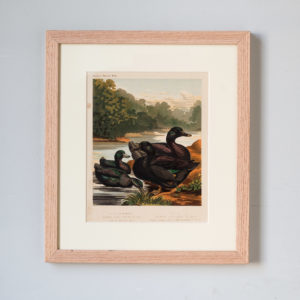
Wright’s Poultry, original chromolithograph from 1873
£130 eachWright’s Poultry, original chromolithograph from 1873
Published by Cassells c1873. Framed in natural ash. 'Black East India Ducks, Black Cayuga Ducks'£130 each -
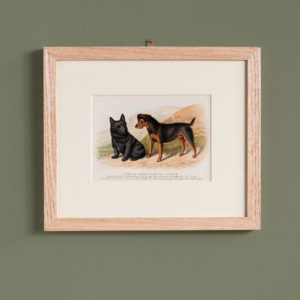
British Dogs 1882 – Scotch Terrier & Welsh Terrier,
£120 each -
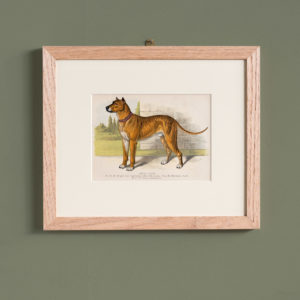
British Dogs 1882 – Great Dane
£120 each -
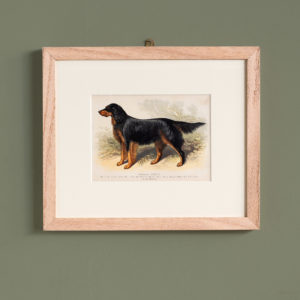
British Dogs 1882 – Gordon Setter,
£120 each -
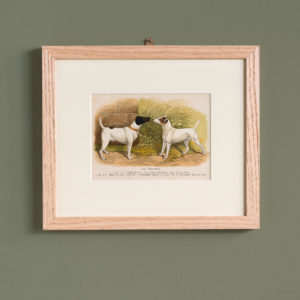
British Dogs 1882 – Fox Terriers,
£120 each -
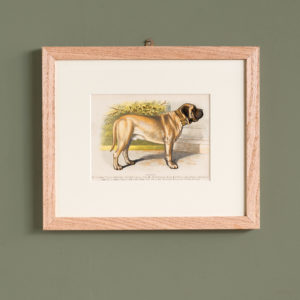
British Dogs 1882 – Mastiff,
£120 each -
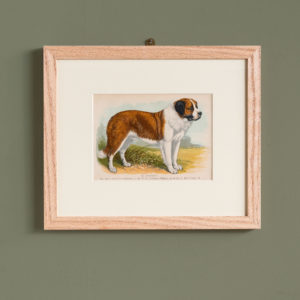
British Dogs 1882 – St. Bernard,
£120 each -
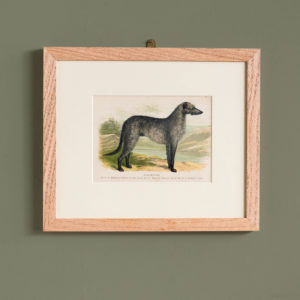
British Dogs 1882 – Deerhound,
£120 each -
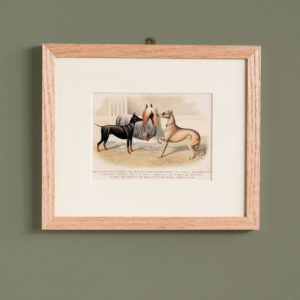
British Dogs 1882 – Black & Tan Terrier, Yorkshire Terrier, Italian Greyhound,
£120 eachBritish Dogs 1882 – Black & Tan Terrier, Yorkshire Terrier, Italian Greyhound,
Illustrations of 'Dogs of the Day'£120 each -
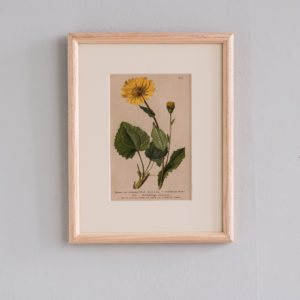
Alpine Flowers
£110 eachAlpine Flowers
Anton Hartinger was an Austrian artist who specialized in still life paintings of fruit and flowers. He was born in Vienna in 1806 and a member of the Academy of Fine Arts Vienna from 1843 to 1851. He later became a pioneer in the field of chromolithographic printing. He died in Vienna in 1890.£110 each -
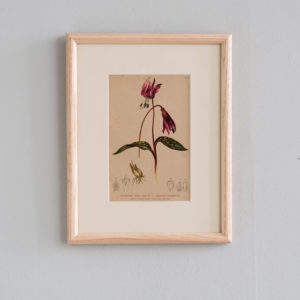
Alpine Flowers
£110 eachAlpine Flowers
Anton Hartinger was an Austrian artist who specialized in still life paintings of fruit and flowers. He was born in Vienna in 1806 and a member of the Academy of Fine Arts Vienna from 1843 to 1851. He later became a pioneer in the field of chromolithographic printing. He died in Vienna in 1890.£110 each -
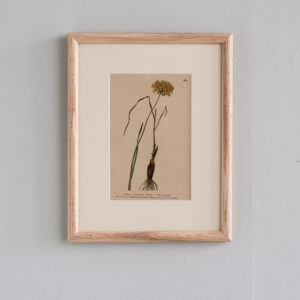
Alpine Flowers
£110 eachAlpine Flowers
Anton Hartinger was an Austrian artist who specialized in still life paintings of fruit and flowers. He was born in Vienna in 1806 and a member of the Academy of Fine Arts Vienna from 1843 to 1851. He later became a pioneer in the field of chromolithographic printing. He died in Vienna in 1890.£110 each -
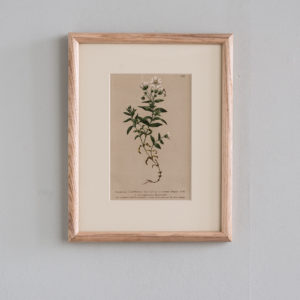
Alpine Flowers
£110 eachAlpine Flowers
Anton Hartinger was an Austrian artist who specialized in still life paintings of fruit and flowers. He was born in Vienna in 1806 and a member of the Academy of Fine Arts Vienna from 1843 to 1851. He later became a pioneer in the field of chromolithographic printing. He died in Vienna in 1890.£110 each -
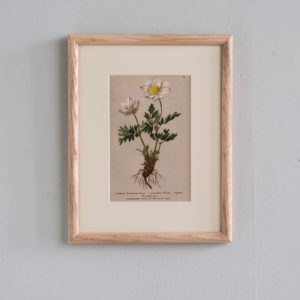
Alpine Flowers
£110 eachAlpine Flowers
Anton Hartinger was an Austrian artist who specialized in still life paintings of fruit and flowers. He was born in Vienna in 1806 and a member of the Academy of Fine Arts Vienna from 1843 to 1851. He later became a pioneer in the field of chromolithographic printing. He died in Vienna in 1890.£110 each -
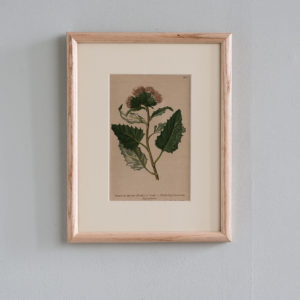
Alpine Flowers
£110 eachAlpine Flowers
Anton Hartinger was an Austrian artist who specialized in still life paintings of fruit and flowers. He was born in Vienna in 1806 and a member of the Academy of Fine Arts Vienna from 1843 to 1851. He later became a pioneer in the field of chromolithographic printing. He died in Vienna in 1890.£110 each -
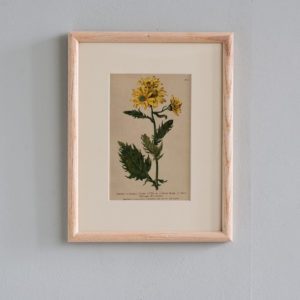
Alpine Flowers
£110 eachAlpine Flowers
Anton Hartinger was an Austrian artist who specialized in still life paintings of fruit and flowers. He was born in Vienna in 1806 and a member of the Academy of Fine Arts Vienna from 1843 to 1851. He later became a pioneer in the field of chromolithographic printing. He died in Vienna in 1890.£110 each -
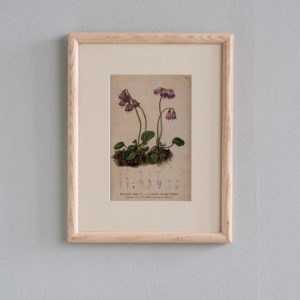
Alpine Flowers
£110 eachAlpine Flowers
Anton Hartinger was an Austrian artist who specialized in still life paintings of fruit and flowers. He was born in Vienna in 1806 and a member of the Academy of Fine Arts Vienna from 1843 to 1851. He later became a pioneer in the field of chromolithographic printing. He died in Vienna in 1890.£110 each -
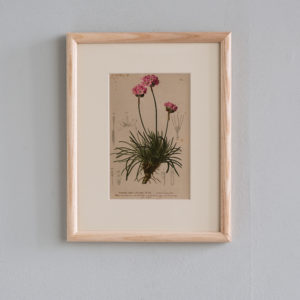
Alpine Flowers
£110 eachAlpine Flowers
Anton Hartinger was an Austrian artist who specialized in still life paintings of fruit and flowers. He was born in Vienna in 1806 and a member of the Academy of Fine Arts Vienna from 1843 to 1851. He later became a pioneer in the field of chromolithographic printing. He died in Vienna in 1890.£110 each -
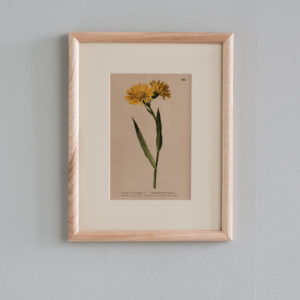
Alpine Flowers
£110 eachAlpine Flowers
Anton Hartinger was an Austrian artist who specialized in still life paintings of fruit and flowers. He was born in Vienna in 1806 and a member of the Academy of Fine Arts Vienna from 1843 to 1851. He later became a pioneer in the field of chromolithographic printing. He died in Vienna in 1890.£110 each -
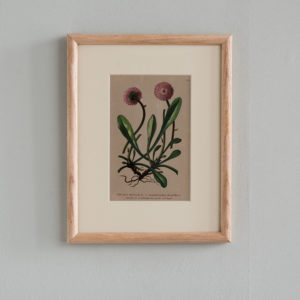
Alpine Flowers
£110 eachAlpine Flowers
Anton Hartinger was an Austrian artist who specialized in still life paintings of fruit and flowers. He was born in Vienna in 1806 and a member of the Academy of Fine Arts Vienna from 1843 to 1851. He later became a pioneer in the field of chromolithographic printing. He died in Vienna in 1890.£110 each -
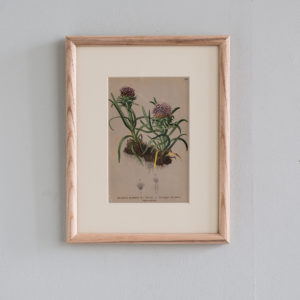
Alpine Flowers
£110 eachAlpine Flowers
Anton Hartinger was an Austrian artist who specialized in still life paintings of fruit and flowers. He was born in Vienna in 1806 and a member of the Academy of Fine Arts Vienna from 1843 to 1851. He later became a pioneer in the field of chromolithographic printing. He died in Vienna in 1890.£110 each -
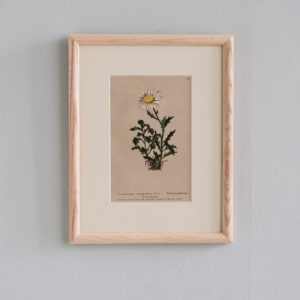
Alpine Flowers
£110 eachAlpine Flowers
Anton Hartinger was an Austrian artist who specialized in still life paintings of fruit and flowers. He was born in Vienna in 1806 and a member of the Academy of Fine Arts Vienna from 1843 to 1851. He later became a pioneer in the field of chromolithographic printing. He died in Vienna in 1890.£110 each -
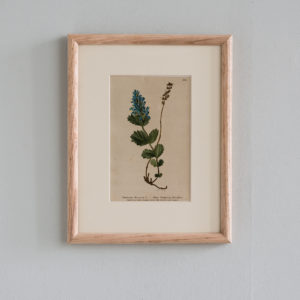
Alpine Flowers
£110 eachAlpine Flowers
Anton Hartinger was an Austrian artist who specialized in still life paintings of fruit and flowers. He was born in Vienna in 1806 and a member of the Academy of Fine Arts Vienna from 1843 to 1851. He later became a pioneer in the field of chromolithographic printing. He died in Vienna in 1890.£110 each -
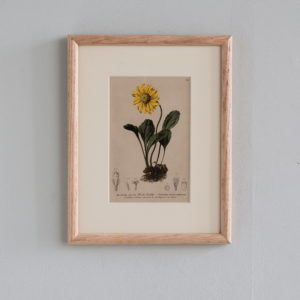
Alpine Flowers
£110 eachAlpine Flowers
Anton Hartinger was an Austrian artist who specialized in still life paintings of fruit and flowers. He was born in Vienna in 1806 and a member of the Academy of Fine Arts Vienna from 1843 to 1851. He later became a pioneer in the field of chromolithographic printing. He died in Vienna in 1890.£110 each -
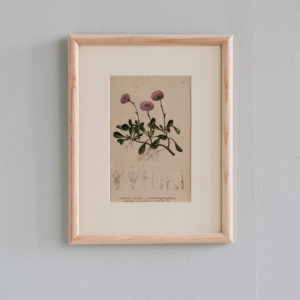
Alpine Flowers
£110 eachAlpine Flowers
Anton Hartinger was an Austrian artist who specialized in still life paintings of fruit and flowers. He was born in Vienna in 1806 and a member of the Academy of Fine Arts Vienna from 1843 to 1851. He later became a pioneer in the field of chromolithographic printing. He died in Vienna in 1890.£110 each -
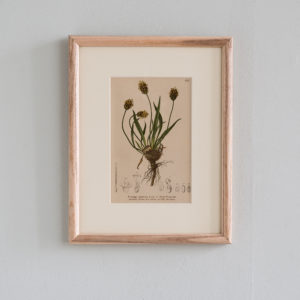
Alpine Flowers
£110 eachAlpine Flowers
Anton Hartinger was an Austrian artist who specialized in still life paintings of fruit and flowers. He was born in Vienna in 1806 and a member of the Academy of Fine Arts Vienna from 1843 to 1851. He later became a pioneer in the field of chromolithographic printing. He died in Vienna in 1890.£110 each -
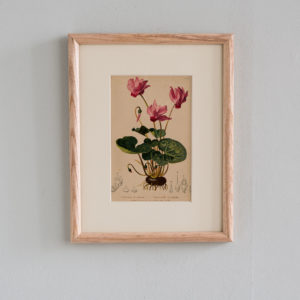
Alpine Flowers
£110 eachAlpine Flowers
Anton Hartinger was an Austrian artist who specialized in still life paintings of fruit and flowers. He was born in Vienna in 1806 and a member of the Academy of Fine Arts Vienna from 1843 to 1851. He later became a pioneer in the field of chromolithographic printing. He died in Vienna in 1890.£110 each -
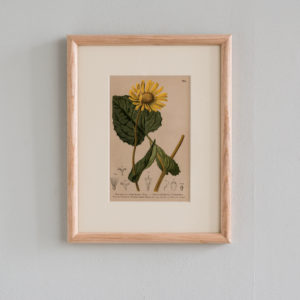
Alpine Flowers
£110 eachAlpine Flowers
Anton Hartinger was an Austrian artist who specialized in still life paintings of fruit and flowers. He was born in Vienna in 1806 and a member of the Academy of Fine Arts Vienna from 1843 to 1851. He later became a pioneer in the field of chromolithographic printing. He died in Vienna in 1890.£110 each -
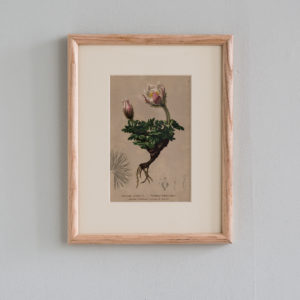
Alpine Flowers
£110 eachAlpine Flowers
Anton Hartinger was an Austrian artist who specialized in still life paintings of fruit and flowers. He was born in Vienna in 1806 and a member of the Academy of Fine Arts Vienna from 1843 to 1851. He later became a pioneer in the field of chromolithographic printing. He died in Vienna in 1890.£110 each -
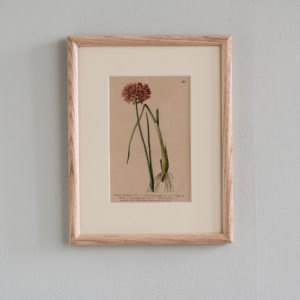
Alpine Flowers
£110 eachAlpine Flowers
Anton Hartinger was an Austrian artist who specialized in still life paintings of fruit and flowers. He was born in Vienna in 1806 and a member of the Academy of Fine Arts Vienna from 1843 to 1851. He later became a pioneer in the field of chromolithographic printing. He died in Vienna in 1890.£110 each
Featured Items
-
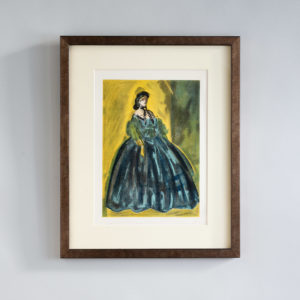
Portraits Part II by Constantin Guys, Verve Vol 2 / No. 5-6.
£500Portraits Part II by Constantin Guys, Verve Vol 2 / No. 5-6.
The Verve Review was a purposefully luxurious. It ran from 1937 to 1960, but with only 38 editions available, due to the high degree of design and editorial work dedicated to each issue. Each edition contained unique lithographic prints, commissioned by the editor, and each cover a double-page lithograph elaborated by one of the artists contained within. It was the brainchild of its editor Stratis Eleftheriades, a Greek National who moved to Paris in the early thirties to take part in the growing Modernist movement, writing under the name of Teriade.£500 -
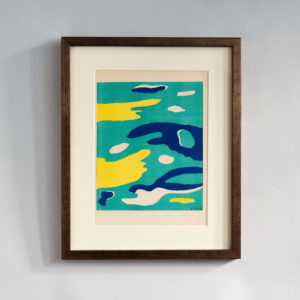
The Four Elements, Water by Fernand Leger, Verve Vol. 1 / No. 1.
£600The Four Elements, Water by Fernand Leger, Verve Vol. 1 / No. 1.
The Verve Review was a purposefully luxurious. It ran from 1937 to 1960, but with only 38 editions available, due to the high degree of design and editorial work dedicated to each issue. Each edition contained unique lithographic prints, commissioned by the editor, and each cover a double-page lithograph elaborated by one of the artists contained within. It was the brainchild of its editor Stratis Eleftheriades, a Greek National who moved to Paris in the early thirties to take part in the growing Modernist movement, writing under the name of Teriade.£600 -
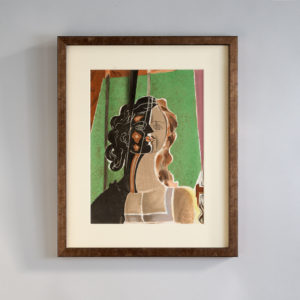
Figure by Georges Braque, Verve Vol 2 / No. 5-6.
£800Figure by Georges Braque, Verve Vol 2 / No. 5-6.
The Verve Review was a purposefully luxurious. It ran from 1937 to 1960, but with only 38 editions available, due to the high degree of design and editorial work dedicated to each issue. Each edition contained unique lithographic prints, commissioned by the editor, and each cover a double-page lithograph elaborated by one of the artists contained within. It was the brainchild of its editor Stratis Eleftheriades, a Greek National who moved to Paris in the early thirties to take part in the growing Modernist movement, writing under the name of Teriade.£800 -
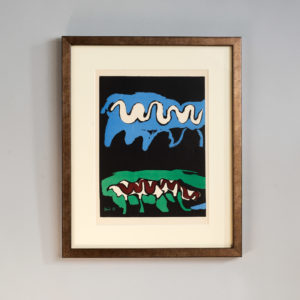
The Four Elements, Earth by Francisco Bores, Verve Vol. 1 / No. 1.
£600The Four Elements, Earth by Francisco Bores, Verve Vol. 1 / No. 1.
The Verve Review was a purposefully luxurious. It ran from 1937 to 1960, but with only 38 editions available, due to the high degree of design and editorial work dedicated to each issue. Each edition contained unique lithographic prints, commissioned by the editor, and each cover a double-page lithograph elaborated by one of the artists contained within. It was the brainchild of its editor Stratis Eleftheriades, a Greek National who moved to Paris in the early thirties to take part in the growing Modernist movement, writing under the name of Teriade.£600
